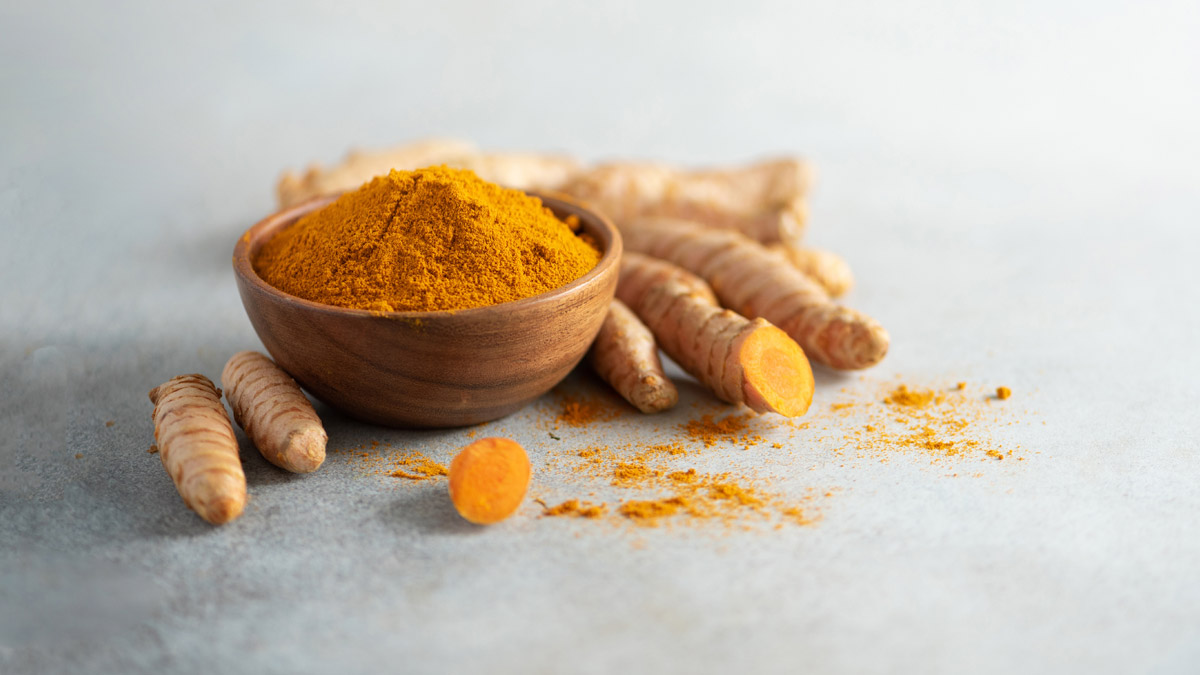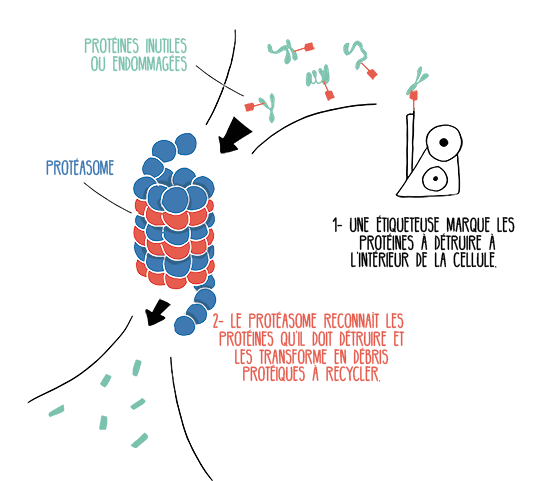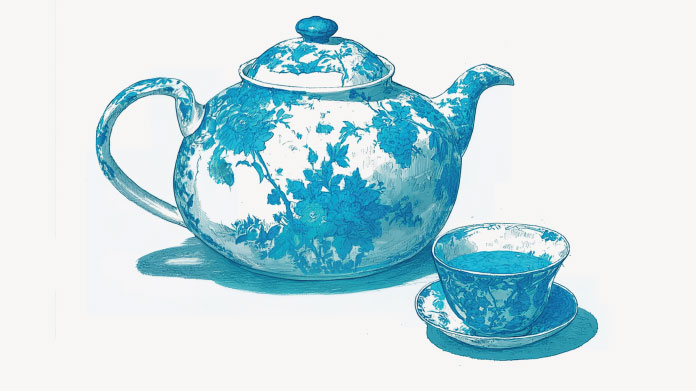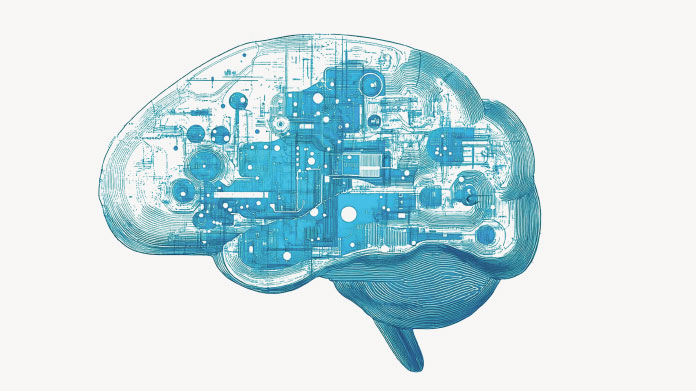Turmeric disables a protein-crusher associated with cancer
Within the scientific community, enthusiasm for turmeric’s anti-cancer virtues is palpable: over the past 30 years, the number of studies conducted on the plant has skyrocketed, with a steady increase in the rate of publication...

If you’re interested in natural medicine, you’ll have certainly come across turmeric (also referred to as curcumin from the Latin Curcuma longa), a plant known as ‘sunshine dust’ and which has been prized by Asian populations for thousands of years.
The brightly-coloured root of this plant has featured in Ayurvedic medicine for at least 4000 years and is hugely popular the world over. It is sometimes used for its antioxidant properties, sometimes for its exceptional anti-inflammatory effects, but it is its ability to prevent cancer, and even slow down its progress, which is the most exciting aspect of this plant. Within the scientific community, enthusiasm for turmeric’s anti-cancer virtues is palpable: over the past 30 years, the number of studies conducted on the plant has skyrocketed, with a steady increase in the rate of publication. Interest soared when researchers observed a lower prevalence of many forms of cancer in Asian countries where turmeric is widely consumed (1).
The majority of these studies provided clear confirmation of turmeric’s role in preventing the spread of cancer cells (2-8) though they did not identify why. Now, the 941st scientific study into this plant has finally provided a convincing explanation as to its mechanism of action. Here, we look at the fascinating history of turmeric, a plant which surely has even more to reveal in the years to come.
The amazing growth of turmeric: the story behind its ‘arrival’
It probably started when a small group of south east Asians one day accidentally tasted the root of a little purple-flowered perennial related to Curcuma longa. Its pleasant taste led to them gradually introducing it into their diet, though they didn’t realise it actually had health benefits. These as yet unknown properties were in fact conferring a selective advantage on these individuals: compared with their peers, they healed better and had a slightly longer life expectancy - and thus a higher-than-average number of descendants. Logically, these descendants would have made the same dietary choices as their parents, in turn passing their habits on to the generations that followed, so that over time, the people that consumed turmeric grew in number, and even formed a population in their own right: a population of turmeric-consumers. We don’t really know how, but gradually these individuals began to draw links between the plant and their ‘superiority’: they slowly realised that it gave them ‘special powers’. It’s little wonder then that it came to be seen as sacred – giving rise to amazing myths and popular beliefs which are still recounted today. In Malaysia, for example, the mother’s stomach and umbilical cord are still smeared with turmeric paste to ‘chase away evil spirits’, while in India, a turmeric-dyed thread is passed around the bride’s neck to stimulate fertility.
As time went by, Asian populations realised they could control production of their revered plant, and even grow versions with thicker roots by crossing individual specimens. Thus research now shows that Curcuma longa is the result of intensive domestication and that the wild plant probably contained fewer beneficial substances like curcumin. The species available to us today is the complex result of interaction between humans and their environment …
In India, the 2nd century BC was the period of Vedic and then Siddha traditional systems of medicine. Very much ahead of their time, these holistic medicine systems were based on the principle that diseases are contingent on dietary factors. Turmeric, or Manjal, was a key feature of such medicine: the Siddhars used it for cardio-protection, in particular. When many years later Arab traders went on to discover the spice and the claims made for it by the locals, they too were much taken with it and contributed to its worldwide growth in popularity.
Today, turmeric is a natural product known the world over. The traditional Asian view of it still persists despite those beliefs being perceived by Western populations as somewhat naive. But how can we criticise them for it? They had no way of comprehending how turmeric was acting in their bodies nor how it was miraculously enabling them to live longer except through their belief system and associated folklore. Modern medicine is much more grounded: it has no truck with the fanciful tales surrounding traditional plants. Its sole interest is in establishing whether these plants have a genuine physiological effect on the body, if they can be used to prevent or treat disease and what their mechanism of action is. And it turns out that turmeric now ticks all three of these boxes …
We now know turmeric’s mechanism for cancer prevention
Using a highly-sophisticated technique called x ray crystallography, scientists at the University of California in San Diego have demonstrated that curcumin, a component of turmeric, has a very specific spatial form. When it is in close proximity to a molecule called DYRK2, associated with cell proliferation, the two molecules fit together like pieces in a jigsaw puzzle. This ‘coupling’ prevents the DYRK2 from following its normal path: the curcumin acts in a similar way to a pair of handcuffs that prevent a person from using their arms.
Impeded by curcumin, DYRK2 is thus no longer able to carry out its principal mission: to activate a a selective ‘crusher’ that destroys unneeded or damaged proteins in cells. Think of this as a huge garbage disposal grinding up the proteins and spitting them out. It is referred to scientifically as proteasome and without it, protein waste products would build up and cells would ultimately explode. It’s therefore essential for our survival.

In cancer cells, however, this ‘crusher’ becomes completely unregulated. No longer able to correctly select the proteins it should be destroying, it instead starts eliminating those the body needs to survive. In this uncontrolled state, it has a specific appetite for proteins that are able to detect cell abnormalities and ‘raise the alarm’. These ‘lifesaver’ proteins constantly patrol cells and rigorously control all its components. When an abnormality is detected, complex molecular reactions are triggered in order to repair it. If repair is not possible and the abnormality is serious enough to compromise survival of the whole body, the lifesaver proteins order the cell to ‘commit suicide’. Much better to sacrifice one cell than risk seeing it multiply into a colony that poses a danger to the body.
We can therefore see how cancer cells manage to proliferate in spite of the many abnormal signals they send out: the out-of-control crusher eliminates the proteins which are supposed to be looking out for abnormalities and preventing abnormal cells from multiplying. This enables the cancer cells to reproduce at an alarming and uncontrolled rate. Without this malfunction, the cancer cells wouldn’t get very far at all. This is why research has for some time been aimed at producing drugs that can block the action of this cell crusher. In binding to DYRK2, curcumin does precisely that. It indirectly deactivates the cell crusher, allowing lifesaver proteins to survive and carry out their function – at least temporarily. Curcumin does not permanently bind to kinase DYRK2, but this ‘burst’ is enough to make a cancer cell kill itself or enable some of the abnormalities to be repaired …
This newly-discovered mechanism of action adds to turmeric’s recognised antioxidant and anti-inflammatory properties which already help prevent and treat many diseases in Asia and elsewhere. It further reinforces turmeric’s status as a superfood.
How should you take turmeric to get the most from its beneficial effects?
Turmeric’s potential is exceptional, provided that is, it comes into contact with the body’s cells. The study’s authors are careful to stress that curcumin bioavailability is poor (13-14) and that the fraction that reaches the bloodstream is rapidly eliminated by the liver via urine. This low bioavailability explains why turmeric is used more for prevention than treatment: the amount of curcumin reaching cells may be enough to prevent a cell from becoming cancerous (by helping to repair errors or preventing proliferation) but it is not sufficient to address an existing tumour that contains millions of cancer cells.
This bioavailability problem does not arise in the digestive tract as curcumin comes into contact with cells without having to cross the intestinal wall. The quantity that’s active thus depends directly on the dose ingested. This is why clinical studies focus primarily on cancers of the digestive tract (15), especially colon cancer which affects 500,000 Europeans each year.
Are there ways of increasing the bioavailability of curcumin? Fortunately, yes. And here again, popular Asian wisdom is ahead of scientific research as the ingredients that increase curcumin bioavailability feature in many traditional recipes such as curry and chutney. These ingredients include bromelainpiperine, an alkaloid from black pepper also present in the supplement Bioperine. How does it work? By increasing the activity of a gut protein involved in transport (16) as well as by slowing down the mechanism that solubilises curcumin and helps eliminate it in urine (17). Thus in a human study, administration of piperine increased curcumin bioavailability by 2000% (18) in participants taking a daily dose of just 2g of curcumin, equivalent to one capsule of Natural Curcuma. However, as curcumin is a chelator of iron (19), this approach should only be taken by individuals who are not iron-deficient.
It’s also advisable to take turmeric supplements with food as the presence of fatty acids increases its absorption. This is why supplements such as Super Curcuma contain phospholipids, offering enhanced absorption compared with standard supplements.
Finally, you can grow a few stems of turmeric yourself in a large flowerpot, making sure the soil remains moist and that you protect it from frost. Nine to ten months after planting, you will get fresh rhizomes, with more flavour than the powder sold in supermarkets which is subject to abundant irradiation …
The study at the centre of this article
Sourav Banerjee, Chenggong Ji, Joshua E. Mayfield, Apollina Goel, JunyuXiao, Jack E. Dixon, Xing Guo. Ancient drug curcumin impedes 26S proteasome activity by direct inhibition of dual-specificity tyrosine-regulated kinase 2, Proceedings of the National Academy of Sciences Jul 2018, 201806797; DOI:10.1073/pnas.1806797115
References
- López-Lázaro M. Anticancer and carcinogenic properties of curcumin: considerations for its clinical development as a cancer chemopreventive and chemotherapeutic agent. Nutr Food Res. 2008 Jun;52 Suppl 1:S103-27. Review.
- Bar-Sela G, Epelbaum R, Schaffer M. Curcumin as an anti-cancer agent: review of the gap between basic and clinical applications. Curr Med Chem. 2010;17(3):190-7.
- Polasa K, Raghuram TC, et al. Effect of turmeric on urinary mutagens in smokers.Mutagenesis1992 Mar;7(2):107-9.
- Cheng AL, Hsu CH, et al. Phase I clinical trial of curcumin, a chemopreventive agent, in patients with high-risk or pre-malignant lesions. Anticancer Res. 2001 Jul-Aug;21(4B):2895-900.
- Cruz-Correa M, Shoskes DA, et al. Combination treatment with curcumin and quercetin of adenomas in familial adenomatous polyposis. Clin Gastroenterol Hepatol. 2006 Aug;4(8):1035-8.
- Epelbaum R, Schaffer M, et al. Curcumin and gemci. in patients with advanced pancreatic cancer. Nutr Cancer. 2010;62(8):1137-41.
- Sharma RA, McLelland HR, et al. Pharmacodynamic and pharmacokinetic study of oral Curcuma extract in patients with colorectal cancer. Clin Cancer Res. 2001 Jul;7(7):1894-900.
- Goel A, Aggarwal BB. Curcumin, the golden spice from Indian saffron, is a chemosensitizer and radiosensitizer for tumors and chemoprotector and radioprotector for normal organs. Nutr Cancer. 2010 Oct;62(7):919-30. Review.
- Sherr CJ, Roberts JM. CDK inhibitors: positive and negative regulators of G1-phase progression. Genes Dev. 1999;13:1501–1512. doi: 10.1101/gad.13.12.1501.
- Luqman S, Pezzuto JM. NFkappaB: a promising target for natural products in cancer chemoprevention. Phytother Res. 2010;24:949–963.
- Drexler HC. Activation of the cell death program by inhibition of proteasome function. Proc Nat Acad Sci. 1997;94:855–860. doi: 10.1073/pnas.94.3.855.
- Chevrel, S. (2016). Cancer et hasard. Une dérive médiatique passée au crible. Les Tribunes de la santé, 53,(4), 103-110. doi:10.3917/seve.053.0103.
- Dhillon N, Aggarwal BB, et al. Phase II trial of curcumin in patients with advanced pancreatic cancer. Clin Cancer Res. 2008 Jul 15;14(14):4491-9.
- Reuter S, Eifes S, et al. Modulation of anti-apoptotic and survival pathways by curcumin as a strategy to induce apoptosis in cancer cells. Biochem Pharmacol. 2008 Dec 1;76(11):1340-51. Review.
- Villegas I, Sánchez-Fidalgo S, et al. New mechanisms and therapeutic potential of curcumin for colorectal cancer. Mol Nutr Food Res. 2008 Sep;52(9):1040-61. Review.
- Bhardwaj RK, Glaeser H, Becquemont L, Klotz U, Gupta SK, Fromm MF. Piperine, a major constituent of black pepper, inhibits human P-glycoprotein and CYP3A4. J Pharmacol Exp Ther. 2002 Aug;302(2):645-50.
- Singh J, Dubey RK, Atal CK. Piperine-mediated inhibition of glucuronidation activity in isolated epithelial cells of the guinea-pig small intestine: evidence that piperine lowers the endogeneous UDP-glucuronic acid content. J Pharmacol Exp Ther. 1986 Feb;236(2):488-93.
- Shoba G, Joy D, Joseph T, Majeed M, Rajendran R, Srinivas PS. Influence of piperine on the pharmacokinetics of curcumin in animals and human volunteers. Planta Med. 1998 May;64(4):353-6.
- Jiao Y, Wilkinson J, Di X, Wang W, Hatcher H, Kock ND, D’Agostino R, Jr, Knovich MA, Torti FM, Torti SV. Curcumin, a cancer chemopreventive and chemotherapeutic agent, is a biologically active iron chelator. Blood 2009;113:462–9.
Crédits Illustrations : Lucille Duchene, www.lucilleduchene.com
Keywords
50 Days
Reliable delivery
Reliable delivery. Good product.
Viva
64 Days
Great service
Great service
cl
65 Days
Received product promptly and its early…
Received product promptly and its early days but seems to have improved my daughters alertness.
Anandi
75 Days
Amazing
Amazing, great product!
ALEX Sinclair
79 Days
Good products and Swift handling
Good products and Swift handling
Trusted
84 Days
I trust the company's product
I trust the company's products, the quality is trustworthy and the speed of delivery is also appreciated.
NAJIB Malaah
84 Days
Good job.
This company is serious when it comes to serving it's customers. They are fast to send out the orders. Their site is great and easy. Also, they treat their return customers with great deals and discounts. Keep up the good work.
ABDULQADER Jehad
85 Days
I know frech ( level 3 of 6) and can…
I know frech ( level 3 of 6) and can read your messages, but since order are official documents I'd like to have this in english. Merci Ursula Mathes
Ursula Mathes
89 Days
I worried the delivery.
Box was intact, content correct but delivery time was 12 days. I started to worry!
VIITANEN Esa
91 Days
Supply of Chondroitin 6-sulphate
The company has provided the required product efficiently with no complications.
OldBear
93 Days
Supersmart sell a lot of interesting…
Supersmart sell a lot of interesting stuff. More than jut the usual vitamins though they do all those as well. Ordering pretty straightforward - you may need to try a couple of times to get the offers to apply but they do work. I queried something and had a fairly quick sensible reply. Postage takes a couple if days but you do get good progress information. Very well packed. Bought from Supersmart a few times and will do so again.
AT Griffin
12 Days
Entreprise sérieuse
Livraison Express Service client réactif Produits de qualité Je vous recommande Supersmart !
CIAMPI Brenda
17 Days
Incapacité structurelle à corriger une erreur de traitement de livraison
Cela fait des années que je me fournis chez Supersmart. Ces derniers temps j'ai constaté une baisse significative de la qualité de travail et d'exécution conforme des commandes permanentes. Une erreur de paramétrage du programme robotisé de livraison m'a valu 2 réceptions d'un article non commandé en lieu et place de celui qui figure sur mon espace personnel ET sur la facture émise par Supersmart. Ensuite, la succession de tickets numérotés différents pour les demandes de rectification portant sur le même sujet s'avère être une nouvelle source d'erreur et de précisions de traitement. Cela va de mal en pis, entre délai de réponse et pertinence de celles-là ... Je suis profondément déçu et inquiet : Supersmart est basé en Espagne et son centre logistique au Luxembourg, ce qui obligerait ma PJ à saisir les 2 autorités judiciaires. SUITE À LA RÉPONSE APPORTÉE PAR ANNA : Je pense que je pourrai réintroduire la commande permanente de mes articles augmentée d'un moyen curatif pour mon épouse. La morale de cela est que rien ne vaut l'humain dans l'exécution des conditionnements pour envois... et qu'il est inapproprié de s'asseoir sur des systèmes automatisés sans contrôles.
Thierry Gérard Droz
20 Days
Pueraria Mirifica / transgenre et intersexe
Transgenre (52 ans) et potentiellement intersexe au sens partiel (mosaïcisme) j'ai pris pendant 4/5 ans de la Pueraria Mirifica sans avis d'un médecin... Je suis arrivé/e à ce que je voulais ; rendre plus féminin mon aspect, arrêt des érections et des éjaculations (qui étaient déjà difficiles). Tout dépend des récepteurs hormonaux (oestrogènes) dans chaque cellules de notre corps, XX et XY et phénotypes ne veulent rien dire. J'ai une poitrine, petite, pousse système pileux ralenti. Trop tard pour ma calvitie. Reprise après une pause (20/07/2025) en me fixant 2 pills par jour pendant 6 mois.
GAYET Alexia
25 Days
Ottimi prodotti
Ottimi prodotti. Spedizioni rapide.
Enzo



